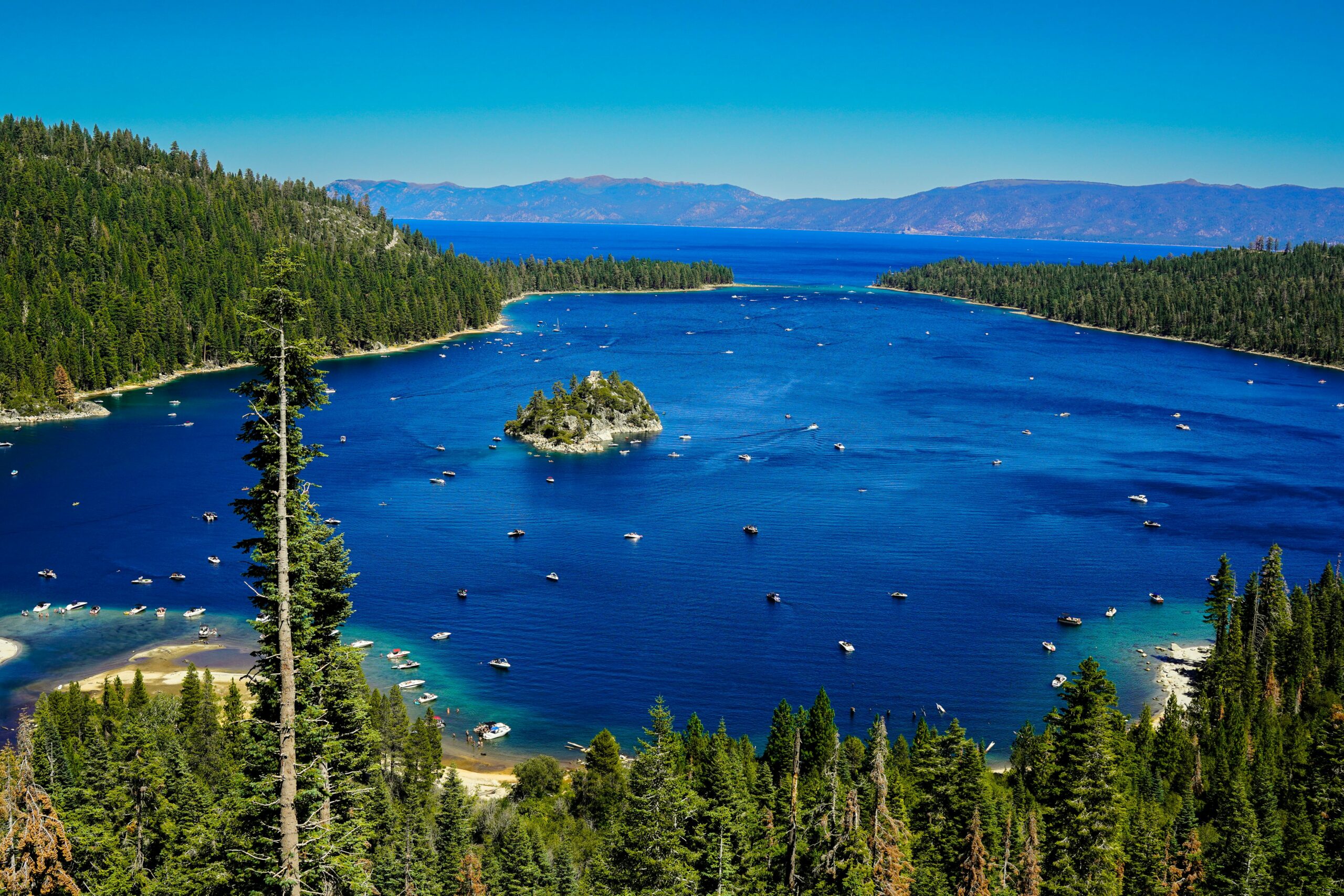High in the Sierra Nevada mountains, straddling California and Nevada, lies Lake Tahoe. Tahoe is renowned for its stunning beauty and clarity, but it faces a variety of environmental challenges that threaten its ecological balance and water quality. Here are the main environmental challenges currently affecting Lake Tahoe:
1. Water Quality Degradation
– Pollution: Urban runoff, stormwater, and wastewater can introduce nutrients such as nitrogen and phosphorus into the lake, which foster algal blooms and reduce water clarity. Nutrient loading can be exacerbated by increased development and tourism in the area.
– Sedimentation: Construction activities and land clearing can increase sediment runoff into the lake, leading to reduced clarity and potential harm to aquatic life.
2. Invasive Species
– Aquatic Invasive Species (AIS): Non-native species, such as the Asian clam and quagga mussels, pose threats to native ecosystems. These species can disrupt food webs, outcompete native organisms, and lead to significant ecological changes.
– Management Challenges: Controlling invasive species often requires substantial ongoing effort and resources, and once established, they can be very difficult to eradicate.
3. Climate Change
– Rising Temperatures: Climate change is leading to increased temperatures, which can alter ecosystems and contribute to changes in water quality and clarity.
– Altered Precipitation Patterns: Changes in snowpack and rainfall can impact water inflows, potentially threatening the lake’s hydrology. Less snowpack can lead to reduced runoff, which is vital for maintaining lake levels and water quality.
– Increased Wildfire Risk: Warmer, drier conditions contribute to higher wildfire risks in the surrounding watershed, which can significantly affect water quality due to increased runoff of ash and debris.
4. Development Pressure
– Urbanization: Increased development around the lake can lead to habitat loss, increased runoff, and greater demands on local resources. The expansion of roads and infrastructure contributes to soil erosion and stormwater runoff.
– Tourism Impact: The high volume of visitors can strain local ecosystems and resources, resulting in increased waste, congestion, and disruption of natural habitats.
5. Physical Habitat Alteration
– Recreational Activities: Boating, fishing, and other recreational activities can lead to the degradation of sensitive habitats. For instance, motorized boats can disrupt aquatic habitats and contribute to pollution through fuel spills and waste disposal.
– Shoreline Development: Alterations to the natural shoreline for construction or recreational purposes can harm wetlands and other critical ecosystems surrounding the lake.
6. Air Quality Issues
– Pollutants: Air pollution from nearby urban areas can lead to acid deposition, contributing to the degradation of soil and water quality around the lake.
– Smoke and Particulate Matter: Wildfires and other sources can increase particulate matter in the air, which can impact the health of both ecosystems and human residents.
7. Pest Management
– Forest Pests: Pests such as bark beetles threaten forest ecosystems, leading to tree mortality that can impact watershed health and increase wildfire risk in the region.
Disclosure: BFSG does not make any representations or warranties as to the accuracy, timeliness, suitability, completeness, or relevance of any information prepared by any unaffiliated third party, whether linked to BFSG’s website or blog or incorporated herein and takes no responsibility for any such content. All such information is provided solely for convenience purposes only and all users thereof should be guided accordingly. Forecasts are based on current conditions, are subject to change, and may not come to pass. Please remember that different types of investments involve varying degrees of risk, and there can be no assurance that the future performance of any specific investment or investment strategy (including those undertaken or recommended by BFSG), will be profitable or equal any historical performance level(s). Please see important disclosure information here.


